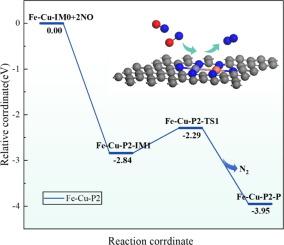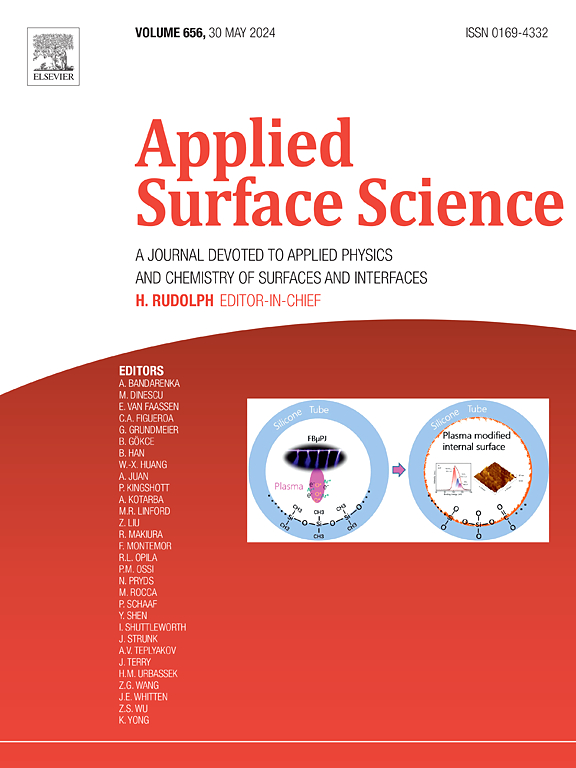以掺杂 N 的石墨烯为支撑的双原子铁铜催化剂还原氮氧化物的机理透视:一项 DFT 研究
IF 6.3
2区 材料科学
Q2 CHEMISTRY, PHYSICAL
引用次数: 0
摘要
通过密度泛函理论(DFT)模拟研究了掺氮石墨烯支撑的双原子铁-铜催化剂还原氮氧化物的机理。研究了氮氧化物在掺氮石墨烯支撑的单原子铁催化剂、单原子铜催化剂和双原子铁铜催化剂上的吸附特性以及氮氧化物的还原机理。研究发现了氮氧化物在上述催化剂上还原的几种可能反应途径,并计算了各反应步骤的能垒。双原子铁铜催化剂还原 NO 的最可能途径是 NO 分子通过 Langmuir-Hinshelwood 机理吸附在催化剂表面,并直接还原成 N2。与单原子催化剂相比,双原子催化剂提供了更多的吸附位点,从而促进了 NO 的吸附,改变了 NO 的还原途径。此外,双原子之间的电子转移降低了 NO 还原的能量障碍,促进了 NO 还原的进展。随着反应温度和压力的升高,双原子铁-铜催化剂还原 NO 的速率逐渐增加。H2O 和 SO2 对双原子铁铜催化剂上的 NO 反应影响很小。本文章由计算机程序翻译,如有差异,请以英文原文为准。

Insight into the mechanism on NO reduction over dual-atom Fe-Cu catalyst supported on N-dopped graphene: A DFT study
The mechanisms on NO reduction over dual-atom Fe-Cu catalyst supported on nitrogen-doped graphene were investigated by density functional theory (DFT) simulation. The adsorption characteristics of NO and the mechanisms of NO reduction over nitrogen-doped graphene supported single-atom Fe catalyst, single-atom Cu catalyst, and dual-atom Fe-Cu catalyst have been studied. Severe possible reaction pathways were found in the NO reduction over above catalysts and the energy barrier of each reaction steps was calculated. The most probably pathway of NO reduction over dual-atom Fe-Cu catalyst is NO molecules adsorbs on catalyst surface via Langmuir-Hinshelwood mechanism and directly reduced to N2. Compared to single-atom catalysts, dual-atom catalyst offer more adsorption sites, thereby promoting the adsorption of NO and altering the NO reduction pathway. Additionally, the electron transfer between the dual atoms reduces the energy barrier for NO reduction, facilitating the progress of the NO reduction. With increasing reaction temperature and pressure, the rate of NO reduction over dual-atom Fe-Cu catalyst progressively increases. The H2O and SO2 have little impact on NO reaction over dual-atom Fe-Cu catalyst.
求助全文
通过发布文献求助,成功后即可免费获取论文全文。
去求助
来源期刊

Applied Surface Science
工程技术-材料科学:膜
CiteScore
12.50
自引率
7.50%
发文量
3393
审稿时长
67 days
期刊介绍:
Applied Surface Science covers topics contributing to a better understanding of surfaces, interfaces, nanostructures and their applications. The journal is concerned with scientific research on the atomic and molecular level of material properties determined with specific surface analytical techniques and/or computational methods, as well as the processing of such structures.
 求助内容:
求助内容: 应助结果提醒方式:
应助结果提醒方式:


